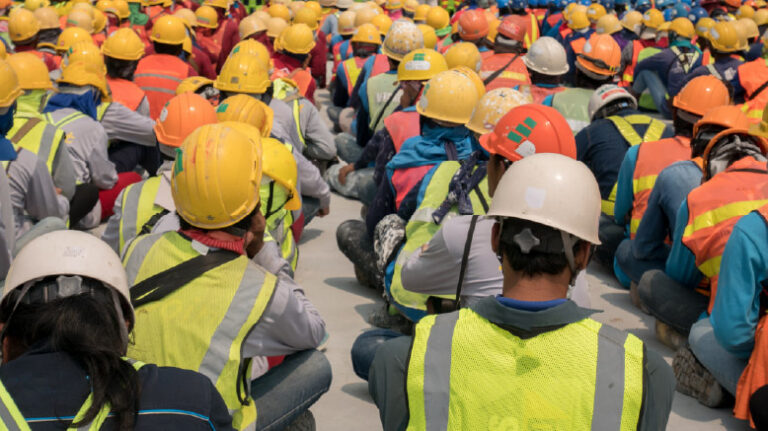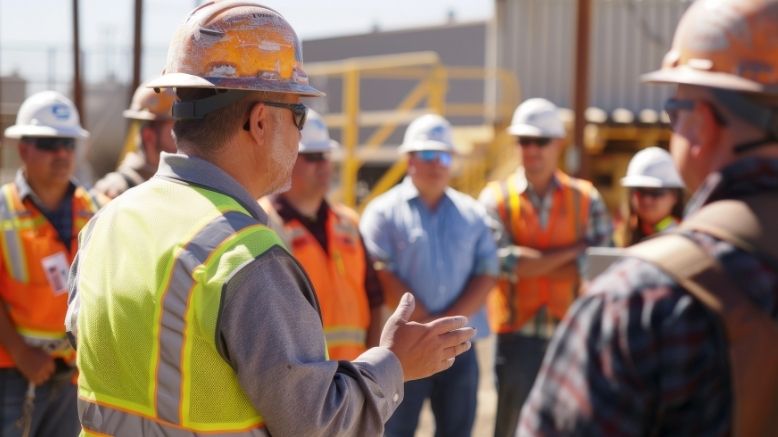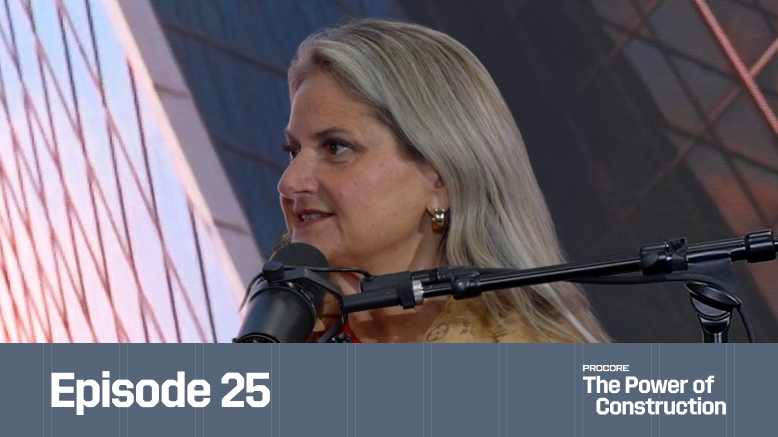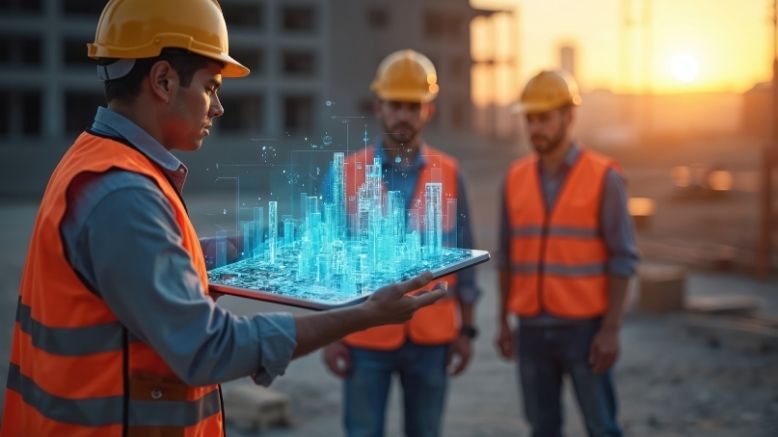— 4 min read
Hard Hats, Hidden Harm: Chronic Pain, Subtance Use & Mental Health in Construction


Last Updated Sep 9, 2025

Jym Bagtaz
Construction Administration Manager
Jym Bagtaz is the Construction Administration Manager at SPEC Process Engineering & Construction, Inc. in Tewksbury, MA. He has over 10 years of field experience and a strong background in both construction and office administration. He specializes in managing projects from pre-construction through closeout, coordinating contractors, tracking budgets, and ensuring compliance with safety and quality standards. In addition to his field expertise, Jym excels at office-based administrative functions, including contract management, document control, RFIs, submittals, scheduling, and stakeholder communication. His combined field and office experience allows him to bridge operational and administrative needs, delivering projects that are efficient, compliant, and completed to specification.

Marlissa Collier
33 articles
Marlissa Collier is a journalist whose work focuses on the intersections of business, technology, policy and culture. Her work has been featured in digital and print formats with publications such as the Dallas Weekly, XO Necole, NBCU Comcast, the Dallas Nomad, CNBC, Word in Black and Dallas Free Press. Marlissa holds an undergraduate degree in Construction Engineering from California State University, Long Beach and an MBA from Southern Methodist University’s Cox School of Business.
Last Updated Sep 9, 2025

Imagine a seasoned construction worker — let's call him Chris — suffers a back injury while on the job. Initially, the pain was manageable, but over time it became intense and persistent. Seeking relief, he turned to prescription opioids. What started as a temporary solution soon spiraled into dependency. His work performance declined, relationships became strained — and Chris finds himself trapped in a cycle of pain, medication and emotional struggle.
Chris’s experience is not unique: It reflects a broader crisis affecting the construction industry, where injuries, chronic pain and substance use often intersect in ways that threaten both workers’ health and workplace safety.
By integrating wellness and mental health into daily operations, providing practical support and promoting transparency and trust, construction companies can protect their most valuable asset: their people. Moving beyond the hard hat, leaders have the opportunity — and responsibility— to confront hidden harm and create a safer, healthier and more resilient industry.
Table of contents
The Alarming Statistics
The numbers are sobering. Construction and extraction workers have the highest drug overdose death rates of any occupational group, with 162.6 deaths per 100,000 workers, more than four times the national average for all occupations.
Workers in this sector are overrepresented in opioid-related fatalities, with construction accounting for roughly 17% of overdose deaths despite making up only about 8% of the workforce. Synthetic opioids, including fentanyl, have driven recent spikes in fatalities, underscoring the urgent need for workplace interventions.
Beyond the immediate risk of overdose, untreated or poorly managed pain contributes to lost productivity, higher turnover and increased workplace accidents, making this a safety and operational concern as well as a public health issue.
Several factors make construction workers particularly susceptible to opioid-related harm. The work is physically demanding, often involving heavy lifting, repetitive motion and high-risk tasks. Injuries are common — and chronic pain can often follow, which is frequently treated with prescription opioids.
I’ve seen workers come in with what seems like a small injury, and within weeks, they’re juggling pain, medication and stress. It can take over their life before anyone even knows.

Jym Bagtaz
Construction Administration Manager
SPEC Process Engineering & Construction, Inc.
Many workers lack paid sick leave, so they may delay treatment or return to work before fully recovering, increasing the risk of further injury and dependency. Seasonal and transient employment creates additional stress, while the pressure to meet deadlines can push workers to self-medicate rather than seek help.
Cultural norms also play a role. Construction has long promoted a “tough guy” mentality, where admitting pain or mental health struggles is discouraged. Workers who reach out for help risk judgment or perceived weakness. This combination of physical, economic and cultural pressures creates a perfect storm for opioid misuse and mental health challenges.
There’s this unspoken rule: suck it up and keep going. Admitting you’re hurting or struggling isn’t seen as professional. That mindset hides problems until they get serious.
Jym Bagtaz
Construction Administration Manager
SPEC Process Engineering & Construction, Inc.
Interventions That Work
Addressing these challenges requires multi-faceted strategies. On-site naloxone training equips workers to respond immediately to opioid overdoses, potentially saving lives. Safer pain management protocols prioritize non-opioid treatments, set prescription limits and encourage ongoing monitoring.
Return-to-work programs help injured employees reintegrate gradually, balancing recovery with productivity. Employee Assistance Programs (EAPs) offer confidential counseling, resources and extra support, while peer networks provide trusted avenues for workers to discuss struggles without fear of stigma or reprisal.
Private outreach is particularly effective. Establishing these supports within the jobsite routine — rather than as an afterthought — can prevent small issues from turning into crises.
Sometimes a worker just needs a private conversation with someone they trust. Peer support or discreet check-ins can make a real difference before issues escalate.
Jym Bagtaz
Construction Administration Manager
SPEC Process Engineering & Construction, Inc.
The Center for Construction Research and Training (CPWR) has been at the forefront of addressing opioid misuse in the industry.
Their “Opioid-Related Harms Prevention” initiative integrates toolbox talks, training sessions and hazard alerts into daily jobsite routines. One pilot program, in partnership with North America’s Building Trades Unions (NABTU), trained peer advocates to provide confidential support to coworkers struggling with substance use or mental health issues. Early results indicate that peer-led programs reduce stigma, encourage resource use and help teams maintain both safety and productivity.
These programs demonstrate that structured, culturally aware interventions can work. They combine education, peer advocacy and access to professional resources in ways that respect the unique pressures of construction work.
Leading the Way
Industry leaders play a key role in creating real change. Safety meetings can evolve to include discussions on pain management and mental health alongside traditional safety topics. Making sure workers know about and can access EAPs or other support services strengthens the safety net.
Leaders who model openness and encourage honest conversations help reduce stigma and build trust. Collaborating with healthcare providers ensures injured workers receive effective treatment without unnecessary reliance on opioids.
When a foreman or superintendent says, ‘It’s okay to talk about what you’re going through,’ that permission can change the culture on an entire jobsite.
Jym Bagtaz
Construction Administration Manager
SPEC Process Engineering & Construction, Inc.
The intersection of chronic pain, opioid use and mental health challenges represents a hidden but profound threat to the construction workforce. Addressing this issue requires both cultural and procedural changes.
Was this article helpful?
Thank you for your submission.
0%
0%
You voted that this article was . Was this a mistake? If so, change your vote
Scroll less, learn more about construction.
Subscribe to The Blueprint, Procore’s construction newsletter, to get content from industry experts delivered straight to your inbox.
By clicking this button, you agree to our Privacy Notice and Terms of Service.
Thank you!
You’re signed up to receive The Blueprint newsletter from Procore. You can unsubscribe at any time.
Categories:
Written by

Jym Bagtaz
Construction Administration Manager | SPEC Process Engineering & Construction, Inc.
Jym Bagtaz is the Construction Administration Manager at SPEC Process Engineering & Construction, Inc. in Tewksbury, MA. He has over 10 years of field experience and a strong background in both construction and office administration. He specializes in managing projects from pre-construction through closeout, coordinating contractors, tracking budgets, and ensuring compliance with safety and quality standards. In addition to his field expertise, Jym excels at office-based administrative functions, including contract management, document control, RFIs, submittals, scheduling, and stakeholder communication. His combined field and office experience allows him to bridge operational and administrative needs, delivering projects that are efficient, compliant, and completed to specification.
View profile
Marlissa Collier
33 articles
Marlissa Collier is a journalist whose work focuses on the intersections of business, technology, policy and culture. Her work has been featured in digital and print formats with publications such as the Dallas Weekly, XO Necole, NBCU Comcast, the Dallas Nomad, CNBC, Word in Black and Dallas Free Press. Marlissa holds an undergraduate degree in Construction Engineering from California State University, Long Beach and an MBA from Southern Methodist University’s Cox School of Business.
View profileExplore more helpful resources

Defending Against Financial & Legal Risks on Megaprojects
The construction industry has seen marked growth in megaprojects. Some experts classify any project over $500 million as a megaproject, while others argue that the build needs to be $1...

Unlocking Project Intelligence: Moving from Raw Data to Actionable Insights
The construction industry faces a wide range of challenges, from ongoing labor shortages to frequent cost overruns. But some the biggest hurdles all stem from unpredictability. The general contractors (GCs)...

Who is accountable for innovation in construction?
Everyone says construction needs to innovate—but no one agrees on who’s actually responsible for making it happen. Is it the owner? The builders? The tech vendor? Or is innovation everyone’s...

Integrated Project Delivery in Practice: A Framework for Collaboration
On construction projects, traditional delivery methods put different stakeholders in their own silos. While the design team feeds drawings and specifications to the general contractor (GC), the GC’s expertise in...
Free Tools
Calculators
Use our calculators to estimate the cost of construction materials for your next project.
Templates
Find a template to help you with your construction project tasks.
Material Price Tracker
Get the latest U.S. retail prices and view historical trends for common building materials.
Glossary
Explore key terms and phrases used in the industry.
